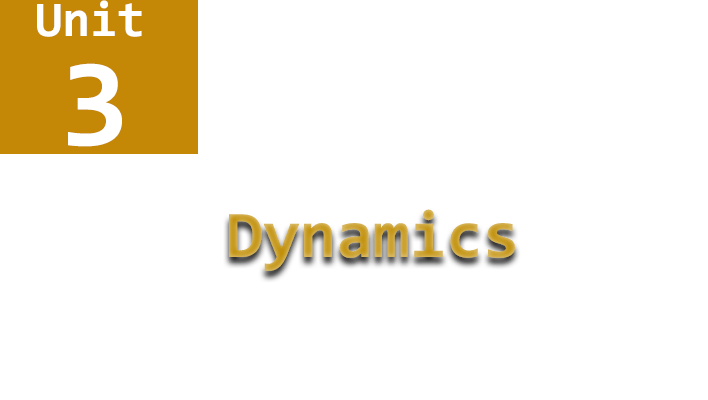9th Class Physics Unit No.3 Dynamics Notes
Force
- Force is a vector quantity that can cause a body to move, change its direction, or stop its motion.
- Pushing or pulling can be examples of applying force to an object.
- Force can also change the shape or size of a body.
- Chapter No.1 Introduction to Biology
- Chapter No. 2 Solving a Biological Problem
- Chapter No.3 Biodiversity
- Chapter No.4 Cells and Tissues
- Chapter No.5 Cell Cycle
Inertia
- Inertia is the property of matter that resists any change in its state of rest or uniform motion in a straight line.
- Objects with greater mass have greater inertia.
- Galileo observed that it is easy to move or stop light objects compared to heavier ones, demonstrating inertia.
Experiment to Understand Inertia
The experiment with a glass and coin on a cardboard shows that the coin doesn’t move with the cardboard due to inertia. Pulling a paper strip quickly from under stacked coins demonstrates the coins’ inertia, as they remain stacked.
Momentum
- Momentum is the quantity of motion possessed by a body due to its mass and velocity.
- It is a vector quantity and is calculated by the product of mass (m) and velocity (v): P = mv.
Newton’s First Law of Motion (Law of Inertia)
- A body at rest will remain at rest, and a body moving with uniform speed in a straight line will continue to do so, provided no net force acts on it.
- Newton’s first law is also known as the law of inertia, as it deals with the inertial property of matter.
- Friction opposes motion and can cause a moving body to stop.
Newton’s Second Law of Motion
- Newton’s second law of motion states that the net force acting on a body is directly proportional to its mass and acceleration.
- Mathematically, F = ma, where F is the net force, m is the mass, and a is the acceleration.
Newton’s Third Law of Motion
- Newton’s third law of motion states that for every action, there is an equal and opposite reaction.
- When one body exerts a force on another, the second body exerts a force of equal magnitude but opposite direction on the first body.
Applications of Newton’s Laws
- Understanding Newton’s laws is crucial in physics and engineering to analyze and predict the motion of objects.
- These laws explain various phenomena, such as the motion of planets, the functioning of vehicles, and the behavior of objects in everyday life.
Friction is a force that comes into action whenever a body is pushed or pulled over a surface. It opposes the motion of moving objects and can both start and stop the motion. Friction is essential in our daily lives, allowing us to walk, write, and maintain control while driving vehicles.
However, it also has disadvantages, as it leads to energy losses and wear and tear in machines. Understanding friction is crucial in designing efficient machines and ensuring safety in various activities.
Friction can be reduced by making sliding surfaces smoother, using streamlined shapes for fast-moving objects like cars and airplanes, lubricating the sliding surfaces, and employing ball bearings or roller bearings. In some situations, friction is desirable, while in others, it needs to be minimized.
It plays a vital role in activities like writing, walking, and driving, but can also pose risks, such as skidding on slippery roads. By controlling and understanding friction, we can optimize its benefits and mitigate its drawbacks.
Circular motion is another important aspect of dynamics. It refers to the motion of an object in a circular path. When an object moves in a circle, it experiences a centripetal force, which continuously pulls it towards the center of the circle. This centripetal force keeps the object in the circular path and is always directed perpendicular to the object’s motion.
In contrast, there is a reaction force known as centrifugal force, which pulls the object outward. Understanding centripetal and centrifugal forces helps us explain various circular motion phenomena, such as the moon’s orbit around the Earth or a stone rotating on a string.
When a car takes a turn, it requires centripetal force to stay on its curved track. This force is provided by the friction between the car’s tires and the road. However, if the force of friction is insufficient, especially on wet roads, the car may skid. To prevent skidding and ensure safe driving, curved roads are often banked. Banking means raising the outer edge of the road, which allows a component of the vehicle’s weight to provide the necessary centripetal force during the turn, thereby ensuring safer driving conditions.
In washing machines, the dryer is equipped with basket spinners that have a perforated wall with fine holes in the cylindrical rotor. When wet clothes are placed inside and the spinner rotates at high speed, the water from the clothes is forced out through these holes due to the lack of centripetal force. This spinning action helps in effectively drying the clothes.
Cream separators in modern plants use a high-speed spinner, functioning based on the principle of centrifuge machines. The separator’s bowl spins at high speed, causing the heavier components of milk to move outward, pushing the lighter cream towards the center. As cream is lighter than other milk components, it accumulates at the outer wall of the bowl, while the denser skimmed milk collects towards the center and is extracted through a pipe. This process effectively separates cream from milk and controls the fat content of various products.

